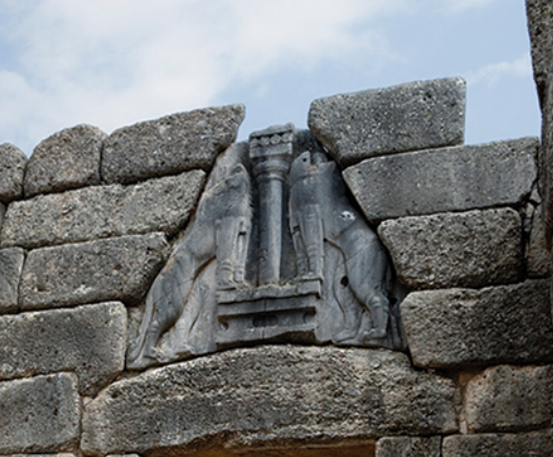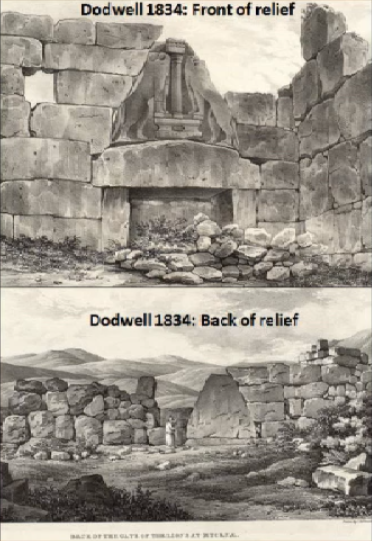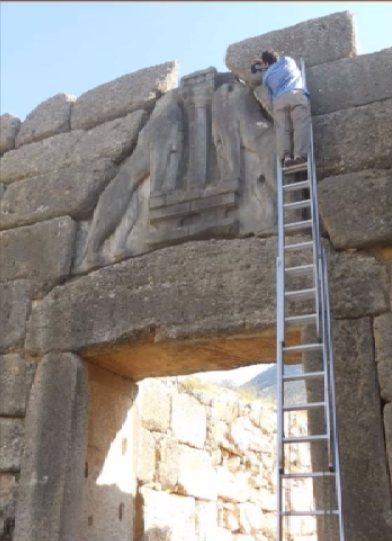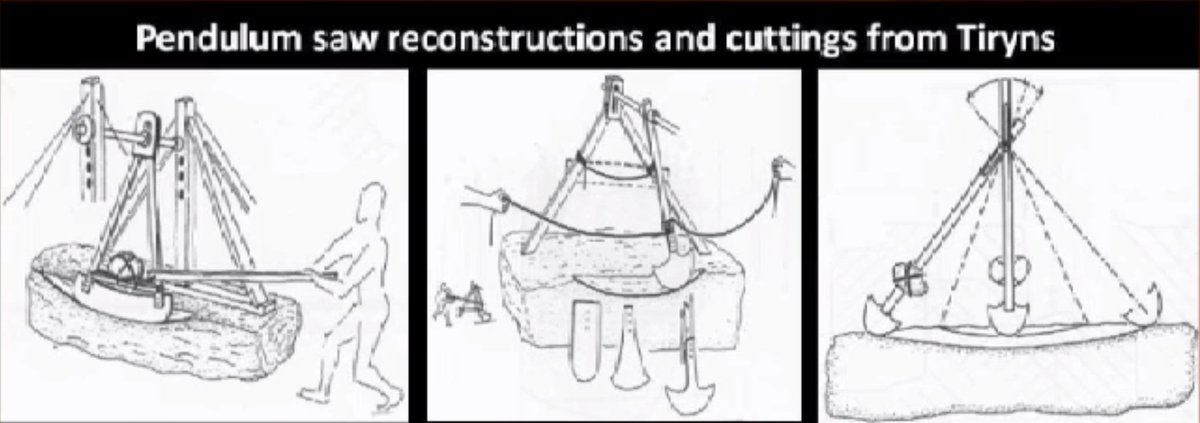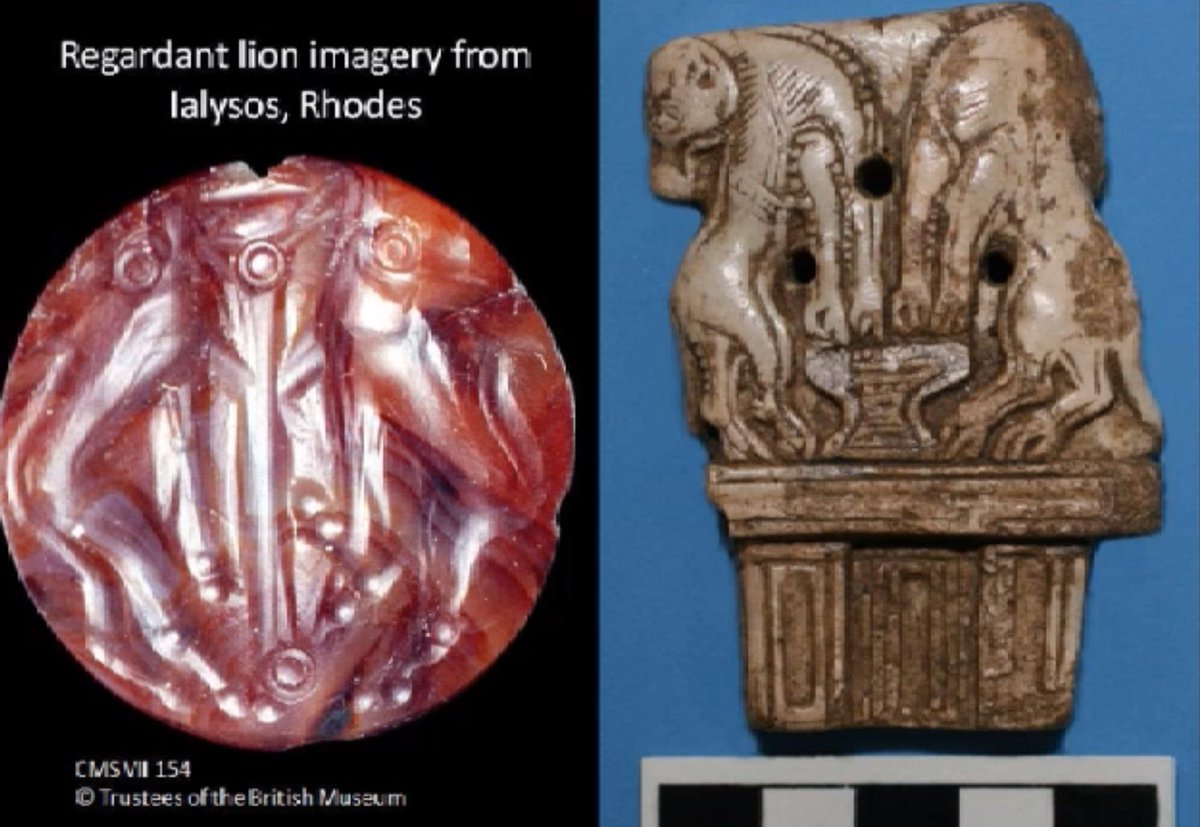#CLST6 #CYO1 #prehistory I watched Nick Blackwell& #39;s fascinating lecture on how the Lion Gate Relief at Mycenae was created, see https://vimeo.com/81787742 ">https://vimeo.com/81787742&... and this picture from Stansbury-O& #39;Donnell p56. All other images come from Blackwell& #39;s talk.
The Lion Gate at Mycenae has generated interest for more than 200 years, and is an impressive and imposing feature that is not done justice by these pictures. See a picture of Nick Blackwell on a ladder for reference.
The gate is dated to the 13th century BCE, with repairs occurring soon after its creation. It is formed of limestone, with the stone flanking it being formed of conglomerate, leading to theories that it might have been created elsewhere and transported to the gate later.
The deduction of the animals& #39; identities is particularly interesting. Possibilities proposed included griffins, sphinxes, lions, and lionesses. Griffins and sphinxes were discounted because necessary supports for wings were not found, however.
So, lion or lioness? The lack of muscular definition where a mane on the head would cover the rock below suggests a male lion, as do the protrusions of the chests of the animals. If there were a mane, the chest protrusion in relief makes more sense. Lions, then!
The methods for the creation are of most interest, though. Initial cuts indicate careful planning of the relief, and were done with pendulum saws, pictured here. See this insane video of Blackwell experimenting to determine blade shape https://youtu.be/3XfoWqzHJPg ">https://youtu.be/3XfoWqzHJ...
While pendulum and convex saws were commonly used in the relief& #39;s construction, marks from straight saws are rare. There clearly must have been use of hammer and chisels, but the marks have been buffed out by a polishing tool.
Most interesting, however, is the use of tubular drills to create the relief. They were used for two main purposes. 1) To create holes for dowels used to attach the heads, and 2) To cut out difficult-to-reach material without fragmenting rock.
Holes would be drilled with organic drill bit. We know this because holes in a series were of differing widths, indicating that bits wore out fast. Then, with a hammer and chisel, the cores would be knocked out and slowly, so would the rest of the material.
Then, the remaining ridges would be filled in, though this filling has long since disappeared. Initially, one large hole was bored on each lion body, and the heads were connected with a single dowel. Sketchy, you might think!
And you& #39;d be right. Successive holes and a carved ledge indicate that after the heads fell off the first time, the builders reevaluated the support system.
Ok, ok, so they really knew how to build this stuff, big deal. Here& #39;s the really interesting part. These tubular drills appear only briefly in the 13th and 14th century BCE and only at Mycenae and Tiryns, and then disappear from the Aegean.
But in Anatolia, the Hittites used these drills for thousands of years, and in the same methods used to construct the relief. Hittite kings had correspondences (though the record is thin) of communications with a kingdom to the west, Ahhiyama, posited by some to be Mycenae.
Blackwell points out that the Hittites had a sort of artisan exchange program with Egypt and other kingdoms that allowed loans of skilled builders, and suggests that the relief might have been created by Hittite builders themselves, if Ahhiyama turns out to by Mycenae.
Not only are the drill marks and techniques similar, but the stone-cutting and laying of the conglomerate also mirror Anatolian gates. The relief and iconography itself, however, is distinctly Mycenaean, see the following comparanda predating the relief.
Unimaginably fascinating! This relief coupled with Anatolian evidence of Hittite communication with other empires and kingdoms potentially suggests a migration and exchange of skilled craftsmen! All from some drill marks and stone cutting.

 Read on Twitter
Read on Twitter